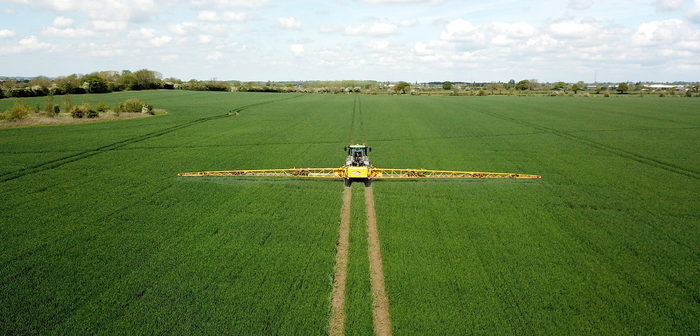Independent rapid diagnostic tests of wheat plants have highlighted significant levels of septoria in crops as UK growers prepare their T2 fungicide applications.
Warm weather, heavy dews and rain showers in the past week have created “almost perfect conditions” for the spread of disease – including rusts – according to SwiftDetect.
Laboratory samples analysed so far show high levels of septoria in several varieties such as Skyfall and Skyscraper, and even medium levels in Extase.
Geographic variations
There are geographical variations with medium-to-high levels across large parts of the country including Scotland, the east and west midlands, and parts of the eastern counties.
Corteva Agriscience says the bulk of the UK’s T2 applications will take place this month, while the Met Office predicts a period of changeable weather conditions over the next fortnight and into June, with shower spells expected ahead of key flag-leaf fungicide sprays.
As a result, Corteva is advising growers to tackle the threat with a robust T2 fungicide programme.
Mike Ashworth, Cereal Fungicide Category Manager for Corteva, said: “The current mix of rain and warm temperatures are the optimum conditions for septoria to thrive and we are urging growers to base their spray decisions on a number of factors.
“With an unseasonably dry spell during the spring, T1 fungicides were perhaps being applied under a false sense of security. Now we are seeing reports of high levels of latent septoria infection which will become problematic as the season unfolds, much like it did last year.
“The value of wheat is also an important consideration. With prices well in excess of £300/tonne, protecting plants to release their potential over the next few weeks will be important to farm incomes.
“Rates should also be considered. Fungicide applications are mostly addressing future disease and weather situations so cutting rates based on a dry April could be risky.”
Swift Detect indicates the level of infection using a traffic light system to help farmers understand their position before making a decision on the appropriate product and rate for a T2 spray.
False sense of security
Chris Steele, product manager for SwiftDetect, said: “I think a lot of people have been lulled into a false sense of security as there was quite a bit of disease visible early in January and February which decreased going into in March. However, just because you can’t see disease doesn’t mean it’s not there.
“While growers will be able to spot visible disease, our rapid test gives an early warning of its presence in the crop when it’s invisible to the naked eye. For septoria, the latent period is 14 to 28 days, and for yellow rust it can be up to 14 days depending on weather conditions.”
Corteva is advising growers to use a product which will deliver lasting protection during a key growth stage of the crop.
Univoq® fungicide, containing Inatreq™ active, was approved for sale and use in the UK last year and offers protectant control on all septoria strains.
The product is the first new target site for septoria control registered in the UK for 15 years.
Mr Ashworth said: “Univoq has the flexibility growers require to adjust their programmes according to their disease risk. We are advising 1.25 litres per hectare in most situations, but that rate can be adjusted up to 1.5l/ha in high pressure situations, or down to 1.1l/ha.
“Growers will get long-lasting, robust protection from the Inatreq molecule which will also treat any latent infection in the crop.
“Applied at the T2 timing, Univoq will maintain green leaf area and allow the crop to build yield long after application.”




